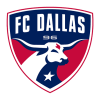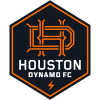In 2022, discounting interim-turned-permanent managers, MLS has seven teams with head coaches who are either new to the league or new to their club.
In the Western Conference, Steve Cherundolo took over LAFC, Nico Estevez now leads FC Dallas and Paulo Nagamura is in charge of Houston Dynamo FC. Out East, Chicago Fire FC (Ezra Hendrickson), FC Cincinnati (Pat Noonan), Toronto FC (Bob Bradley) and Charlotte FC (Miguel Angel Ramirez) all have new coaches too.
Now, managers might not matter as much as we think they do: an “elite” player will likely have a larger (and more direct) impact on a team’s success than an “elite” manager. Still, managers do matter. They set their team’s on-field approach, outlining specific principles of play that work together to create an overarching style … if things go well, that is.
With Week 3 in the books, what kind of principles and styles is the above group implementing? And how are they using their star player(s)?
Good questions. We’ll examine the Western Conference bunch – Cherundolo, Estevez and Nagamura – this week. Next week, we’ll tackle the Eastern Conference bunch.
It’s early in the year, but we can still learn bits and pieces about what they’re trying to do. Let’s get started.
2022 manager: Steve Cherundolo
Last stop: Las Vegas Lights (USL Championship)
Through preseason and three regular-season games, Cherundolo is yet to make sweeping changes to LAFC’s game model – and that’s a good thing. Most of LAFC’s major issues last season (goalkeeping errors and some individual defensive problems) weren’t grand, tactical things. The personnel has changed in an effort to address those issues, especially with MLS-proven players like goalkeeper Maxime Crepeau, defenders Ryan Hollingshead and Franco Escobar, midfielders Kellyn Acosta and Ilie Sanchez, and forward Ismael Tajouri-Shradi all arriving. But Cherundolo has wisely kept most of Bob Bradley’s stylistic bones from 2017-21.
So far this year, LAFC have used a 4-3-3 possession shape more than any other team in MLS, according to Second Spectrum. There’s some subjectivity there given the fluid nature of formations, but we can still see how committed Cherundolo is to that shape. When playing out of their 4-3-3, LAFC are an aggressive defensive team: they have the second-most counter pressures in the attacking third in MLS. Sound familiar? That was a hallmark of Bradley’s LAFC team too.
Vela's fit and importance
LAFC want the ball. They have the second-highest possession percentage (57%) in MLS this season, only behind Austin FC. Teams have and will continue to bunker against LAFC, which makes it difficult for them to create a ton of high-level scoring chances. But with Carlos Vela, Cristian Arango and Brian Rodriguez, they have some of the individual quality up top needed to pose a regular threat to a low block.
Cherundolo is giving Vela, the undisputed star of the team, some freedom in the attack. The majority of Vela’s touches (56%) are coming on the right wing/right halfspace, but the remaining 44% of his touches are distributed fairly evenly between the central vertical strip of the field and the left wing/left halfspace.
Regardless of where he’s positioned, Vela’s dribbling ability helps LAFC create danger against compact defenses, which you can see clearly in this clip from their 1-1 draw with the Portland Timbers in Week 2:
If Vela continues to get involved in the attack and if his team continues to control games like they have to start the season, Cherundolo’s LAFC will be a force in the Western Conference.
2022 manager: Nico Estevez
Last stop: US men’s national team
Switching places with Luchi Gonzalez, former USMNT assistant coach Nico Estevez copied pieces of the Yanks’ style and is pasting it in Dallas. 4-3-3? Check. High pressing? Check. Covering a ton of ground? Check. Lots of passes in the attacking half? Check.
So far in 2022, FC Dallas are playing some fun soccer. Estevez’s 4-3-3 shape features an all-American starting midfield trio, Jesus Ferreira as a chance-creating No. 9 and, as of Saturday’s electric debut, a potentially game-breaking winger in Alan Velasco.
Not unlike Cherundolo’s LAFC, Estevez sets up his Dallas team to control games. Defensively, Dallas are the fourth-most active high-pressing team and the seventh-most active counter-pressing team in MLS. They have also covered the fifth-most ground as a team in the league this year. Over the first three weeks of the season, Edwin Cerrillo, Marco Farfan, Paul Arriola and Brandon Servania are all in the top 30 players in MLS in total distance covered.
When Dallas win the ball, much of their attack flows through Ferreira. Though he was somewhat quiet against Nashville SC over the weekend, Ferreira is second in the league in passes that lead to shots, only behind Chicago's Xherdan Shaqiri. He’s in the 95th percentile for total touches among forwards across the league and is second among forwards in progressive passes.
Alan Velasco, a true star?
With Ferreira in the middle of his forward line, Estevez can count on some creativity in the attack. And with Velasco on the left side of his forward line, Estevez might be able to count on some real attacking output.
Though it’s far too early to make any definitive judgments about Velasco after one 26-minute appearance, his game-sealing goal against Nashville was magical. It showed exactly why the club-record signing and Young Designated Player arrived from Argentina's Independiente for a reported $7 million.
Add some clever right-footed passing to everything you see in the above goal sequence and you have a pretty good idea of how good Velasco was in his MLS debut. Expect to see a lot more of the teenager as an inverted left winger in Estevez’s 4-3-3 over the next few weeks.
Estevez has tools to work with – and it looks like he’s establishing a solid structure for them as Dallas chase an Audi MLS Cup Playoffs return.
2022 manager: Paulo Nagamura
Last stop: Sporting Kansas City II (MLS NEXT Pro)
Compared to Dallas and LAFC, the Houston Dynamo have more on-field questions to answer after their first set of games under Paulo Nagamura. In Nagamura’s first two matches in charge, Houston really struggled to create chances, failing to hit 0.5 xG in Week 1 against Real Salt Lake (with lots of possession) and in Week 2 against Sporting Kansas City (with almost no possession). New DP striker Sebastian Ferreira started both of those games up top, but was starved for service.
Against Vancouver Whitecaps FC in Week 3, though, Nagamura changed things up. Instead of the 4-3-3 he used to start the season, the Brazil-born coach changed Houston’s shape to a 4-2-3-1 in their 2-1 win, with Darwin Quintero playing as a No. 10 underneath Ferreira.
The sample size is incredibly small, but the Dynamo created chances out of their 4-2-3-1. Quintero’s brace, as coupled with Adalberto Carrasquilla's ball progression in central midfield, gave Houston a real attacking threat.
It doesn’t look like Nagamura’s Dynamo team will be very aggressive defensively (they are 26th in MLS in high pressing frequency). If Quintero continues to start, it would make sense for Houston to take a cue from Seattle Sounders FC and the New England Revolution and be selective about when to press out of their mid-block.
HH bump incoming?
As far as stars go, Mexico national team captain Hector Herrera will pair very well next to Carrasquilla (if the Panamanian international stays with the Dynamo after his loan expires) when he arrives in the summer. After Herrera’s days at Atletico Madrid in La Liga, he has plenty of familiarity in a more reserved defensive system and should raise Houston’s floor in the Western Conference.
Though we don’t know if Nagamura will stick to the 4-2-3-1 and let Quintero and Carrasquilla keep pulling the attacking strings, that setup might be Houston’s best chance at a strong 2022 season when HH joins as their Designated Player gem.















